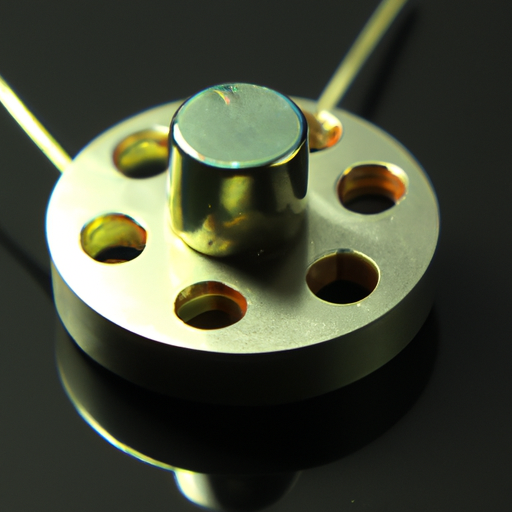Title: Rotary Switch: A Comprehensive Guide to its Functionality and Applications

I. Understanding Rotary Switches (200 words) A. Definition and Basic Components 1. Rotary switch definition 2. Key components: rotor, stator, contacts, and terminals
B. Types of Rotary Switches 1. Single-pole, single-throw (SPST) 2. Single-pole, double-throw (SPDT) 3. Multi-pole, multi-throw (MPMT) 4. Binary-coded decimal (BCD) 5. Step switches
II. Working Principles of Rotary Switches (300 words) A. Mechanical Operation 1. Rotary motion and indexing 2. Detents and click stops 3. Shaft and knob designs
B. Electrical Connections 1. Contact types: make-before-break and break-before-make 2. Switching mechanisms: wipers, cams, and sliders 3. Contact materials: silver, gold, and other alloys
C. Switching Configurations 1. Sequential switching 2. Parallel switching 3. Combination switching
III. Applications of Rotary Switches (400 words) A. Industrial Applications 1. Machine control panels 2. Motor speed control 3. Conveyor systems 4. Robotics and automation
B. Audio and Video Equipment 1. Audio mixers and amplifiers 2. Video switchers and routers 3. Home theater systems
C. Automotive and Aerospace Industries 1. Dashboard controls 2. Flight control systems 3. Navigation and communication devices
D. Electrical Testing and Measurement 1. Oscilloscopes and multimeters 2. Signal generators and power supplies 3. Calibration equipment
IV. Advantages and Limitations of Rotary Switches (200 words) A. Advantages 1. Versatility and flexibility 2. Precise control and selection 3. Durability and reliability
B. Limitations 1. Limited number of positions 2. Mechanical wear and tear 3. Space requirements
V. Maintenance and Troubleshooting (200 words) A. Cleaning and Lubrication 1. Proper cleaning techniques 2. Lubrication for smooth operation
B. Common Issues and Solutions 1. Contact oxidation and corrosion 2. Loose connections and intermittent operation 3. Mechanical misalignment and jamming
Conclusion (100 words) Rotary switches are indispensable components in various industries, providing precise control and selection capabilities. Understanding their functionality, types, working principles, and applications is essential for engineers, technicians, and enthusiasts alike. This article has provided a comprehensive overview of rotary switches, highlighting their importance in industrial, audio/video, automotive, and electrical testing applications. By recognizing their advantages, limitations, and maintenance requirements, users can optimize the performance and longevity of rotary switches. As technology continues to advance, rotary switches will undoubtedly remain a vital component in controlling and managing complex electrical systems.
Title: Rotary Switch: A Comprehensive Guide to its Functionality and Applications

I. Understanding Rotary Switches (200 words) A. Definition and Basic Components 1. Rotary switch definition 2. Key components: rotor, stator, contacts, and terminals
B. Types of Rotary Switches 1. Single-pole, single-throw (SPST) 2. Single-pole, double-throw (SPDT) 3. Multi-pole, multi-throw (MPMT) 4. Binary-coded decimal (BCD) 5. Step switches
II. Working Principles of Rotary Switches (300 words) A. Mechanical Operation 1. Rotary motion and indexing 2. Detents and click stops 3. Shaft and knob designs
B. Electrical Connections 1. Contact types: make-before-break and break-before-make 2. Switching mechanisms: wipers, cams, and sliders 3. Contact materials: silver, gold, and other alloys
C. Switching Configurations 1. Sequential switching 2. Parallel switching 3. Combination switching
III. Applications of Rotary Switches (400 words) A. Industrial Applications 1. Machine control panels 2. Motor speed control 3. Conveyor systems 4. Robotics and automation
B. Audio and Video Equipment 1. Audio mixers and amplifiers 2. Video switchers and routers 3. Home theater systems
C. Automotive and Aerospace Industries 1. Dashboard controls 2. Flight control systems 3. Navigation and communication devices
D. Electrical Testing and Measurement 1. Oscilloscopes and multimeters 2. Signal generators and power supplies 3. Calibration equipment
IV. Advantages and Limitations of Rotary Switches (200 words) A. Advantages 1. Versatility and flexibility 2. Precise control and selection 3. Durability and reliability
B. Limitations 1. Limited number of positions 2. Mechanical wear and tear 3. Space requirements
V. Maintenance and Troubleshooting (200 words) A. Cleaning and Lubrication 1. Proper cleaning techniques 2. Lubrication for smooth operation
B. Common Issues and Solutions 1. Contact oxidation and corrosion 2. Loose connections and intermittent operation 3. Mechanical misalignment and jamming
Conclusion (100 words) Rotary switches are indispensable components in various industries, providing precise control and selection capabilities. Understanding their functionality, types, working principles, and applications is essential for engineers, technicians, and enthusiasts alike. This article has provided a comprehensive overview of rotary switches, highlighting their importance in industrial, audio/video, automotive, and electrical testing applications. By recognizing their advantages, limitations, and maintenance requirements, users can optimize the performance and longevity of rotary switches. As technology continues to advance, rotary switches will undoubtedly remain a vital component in controlling and managing complex electrical systems.